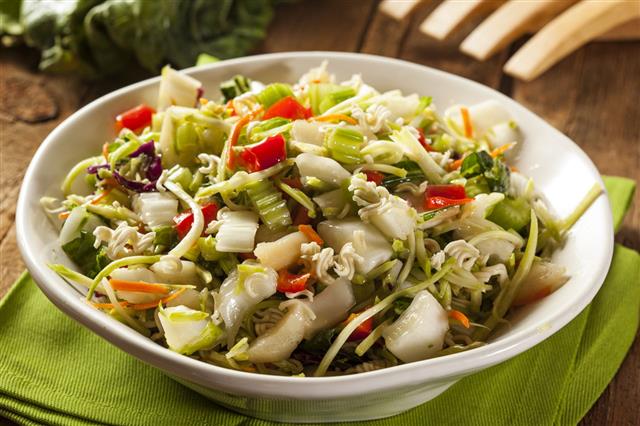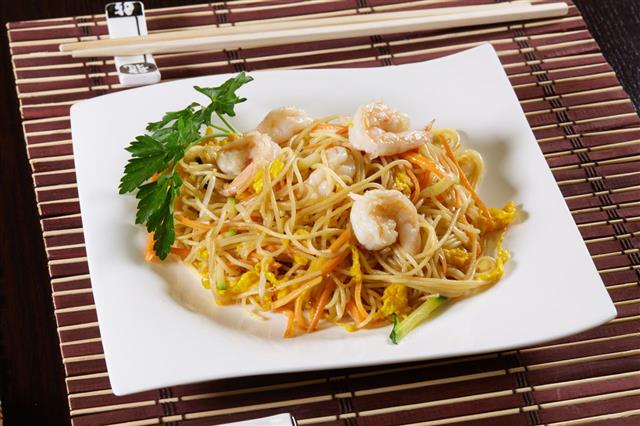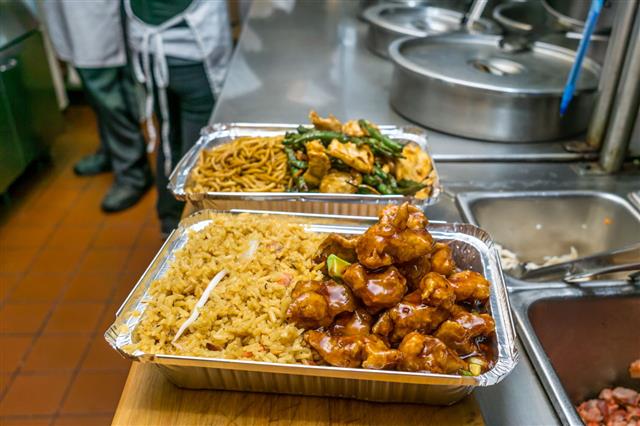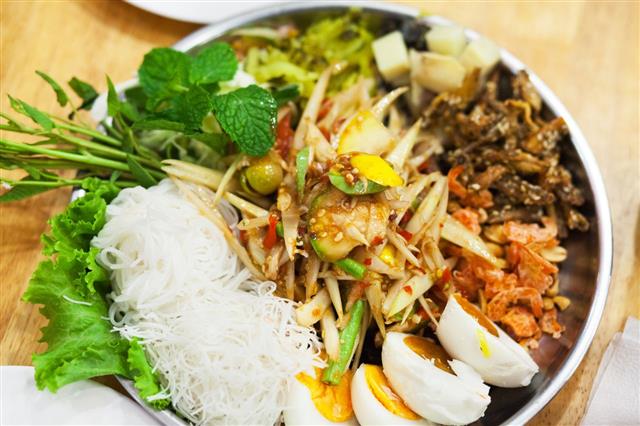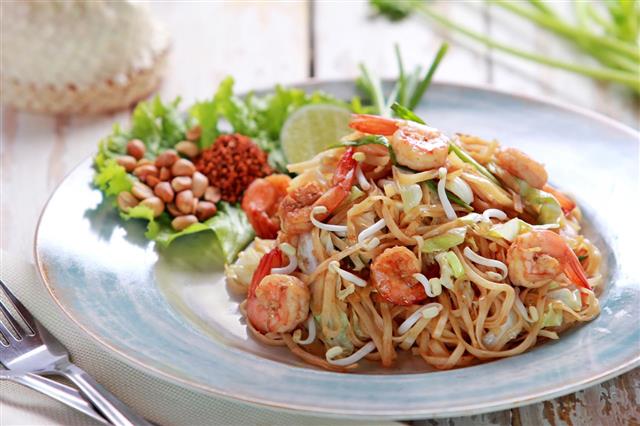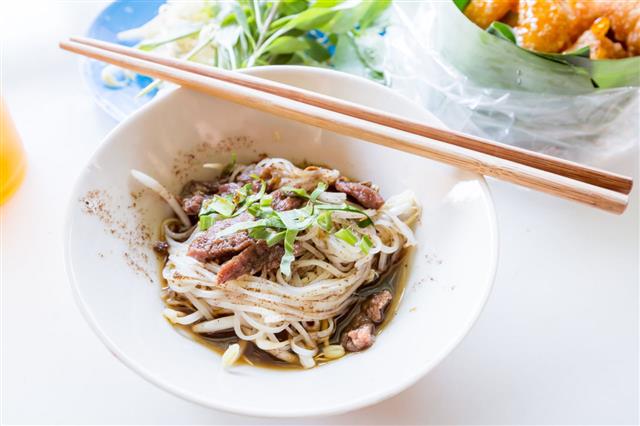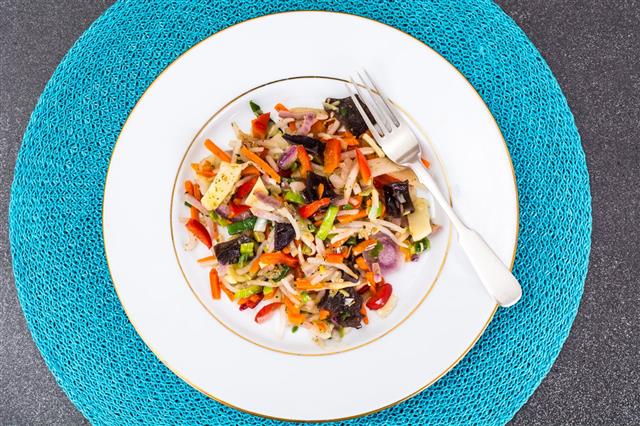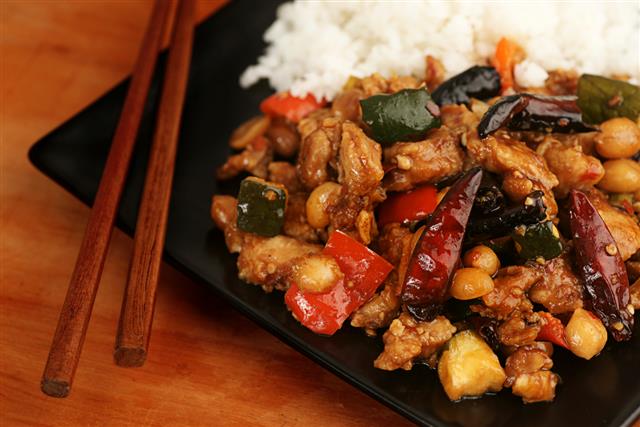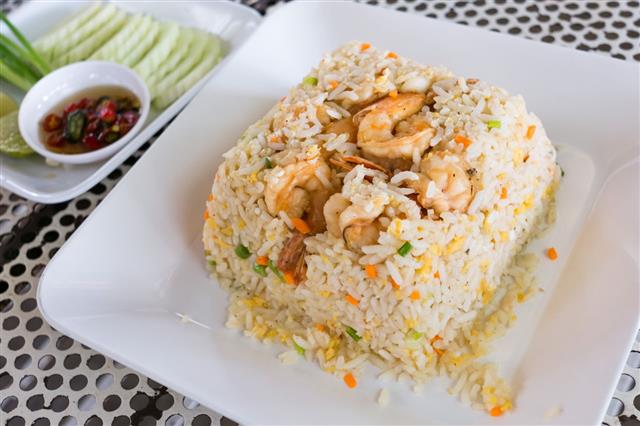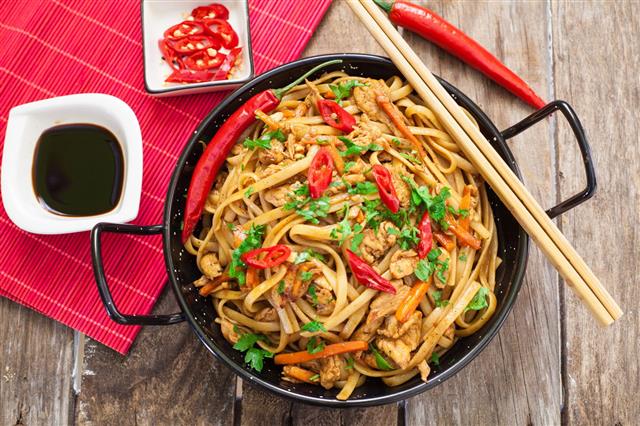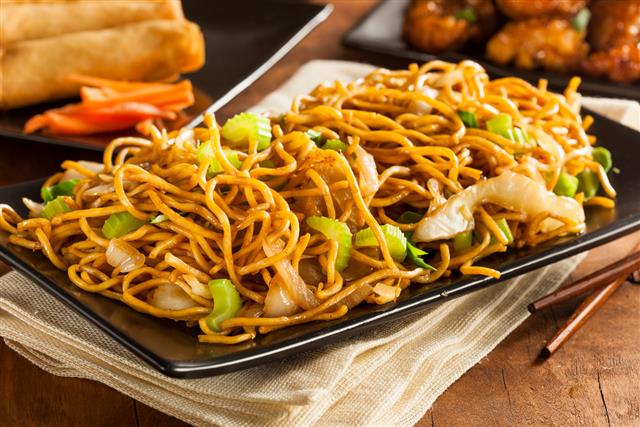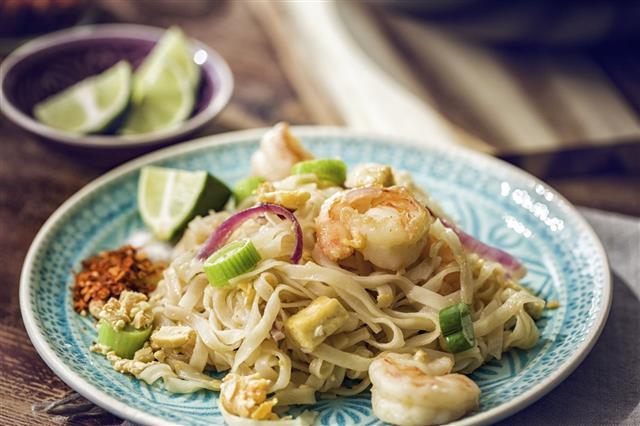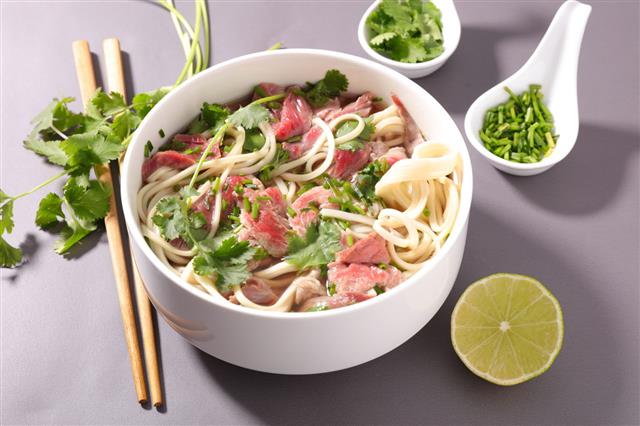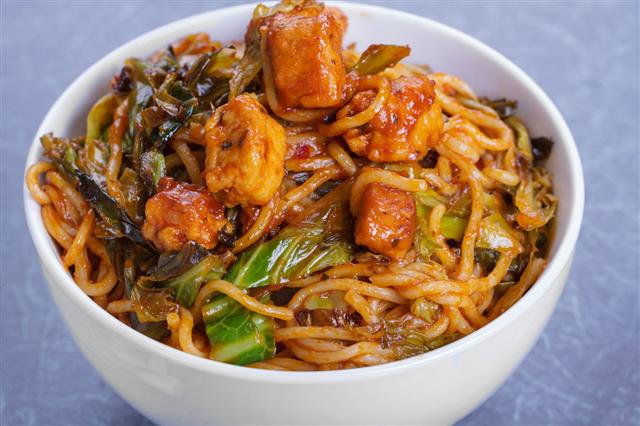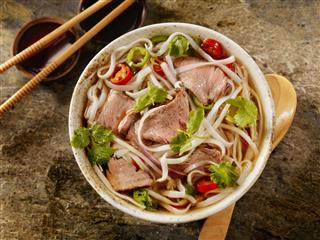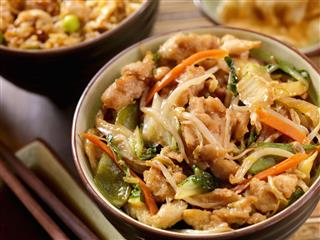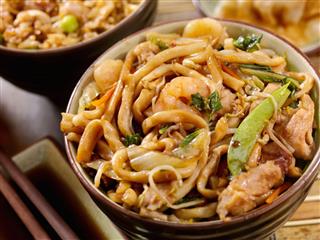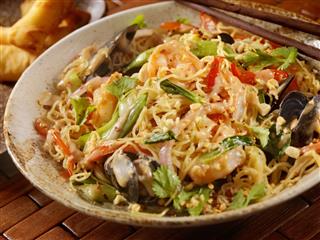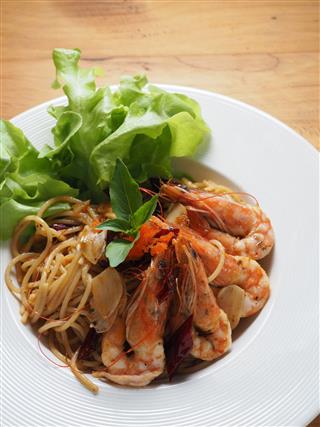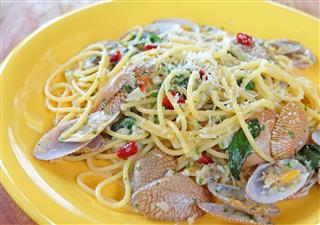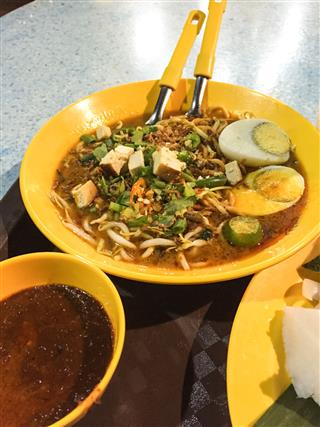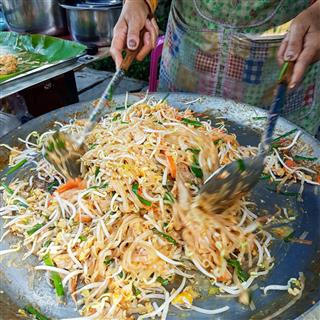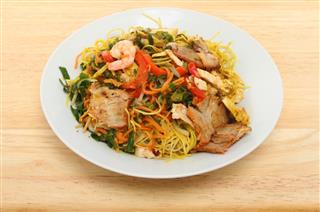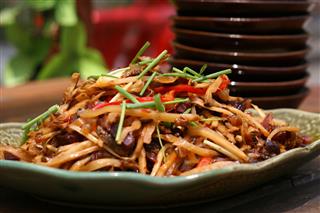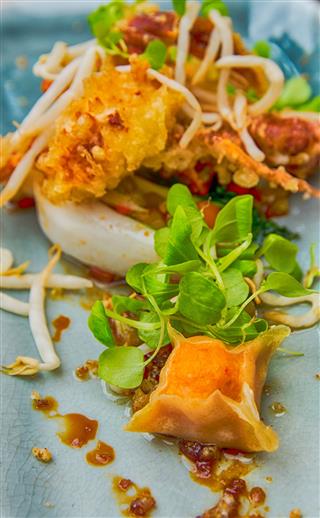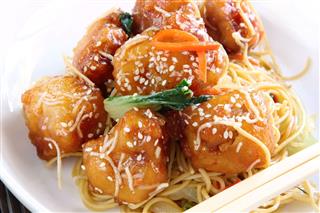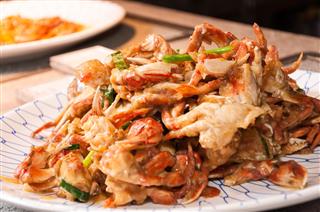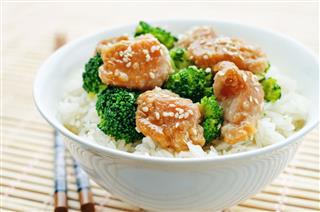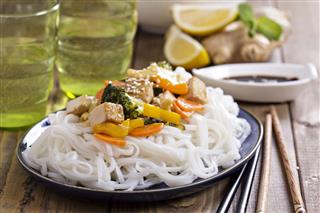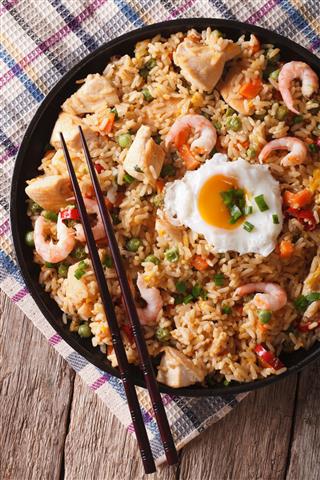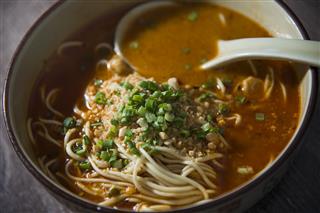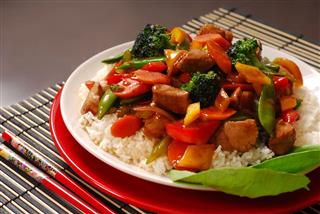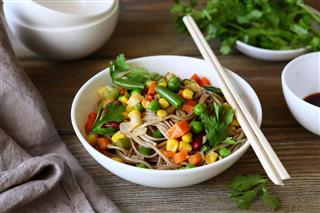
Chinese food is loved the world over. Tastessence tells you about two of the most popular Chinese dishes which are savored all around the globe; chow mein and chop suey. Take a look at the nutrition facts, ingredients, and cooking style of each of these, and also a conclusion upon which is healthier.
Try a Chow Mein Burger
In the southeastern parts of Massachusetts, USA, chow mein is sometimes consumed in the form of a sandwich. The sandwich comprises beef/shrimp/chicken-based chow mein in a brown gravy, placed in between two hamburger style buns.
As we are talking specifically about two dishes, let’s take a look at them separately right at the beginning.
Chow mein is basically stir-fried noodles; its name comes from chau-mèing, which belongs to the Taishanese dialect of Yue Chinese. ‘Chow’ means fried, whereas ‘mein’ refers to noodles. Two main kinds of chow mein exist; the first one being steamed and the other being crispy (Hong Kong style). The former is soft and mostly made up of long rounded noodles, whereas the latter is more dry and crispy, and made up of flat noodles.
Chop suey, on the other hand, is an American-Chinese cuisine, and could also be called other overseas cuisines such as Filipino cuisine, Indian-Chinese cuisine, Polynesian cuisine, Indonesian cuisine, etc. It was thought to be invented in 1896 by the Chinese ambassador Li Hung Chang’s cooks, who cooked the dish for some American guests for dinner. The recipe consisted of celery, bean sprouts, and meat in a tasty sauce. Although, the true tale of its invention remains a mystery. The term ‘chop suey’ originates from the English translation of the Mandarin tsa-sui, and the Cantonese tsaâp suì. The dish can be either cooked with a base of rice or deep-fried noodles, the latter being more popular. A very basic difference between the two is that, in chow mein, the recipe itself includes adding cooked noodles to the cooking sauces, vegetables, and meat (optional). However, in chop suey, the mixture of cooked vegetables and meat (optional) along with the sauces is served over already cooked rice or fried noodles.
Let’s take a look at the difference between chow mein and chop suey by way of a side-by-side comparison.
Chow Mein Vs. Chop Suey
Chow Mein
Ingredients
- Wonton noodles (steamed/fried)
- Bean sprouts
- Celery
- Broccoli
- Cremini/button/shiitake mushrooms
- Bell pepper
- Onion
- Groundnut oil
- Soy sauce
- Oyster sauce (non-vegetarian)
- Cornstarch
- Chicken breast (non-vegetarian)
Cooking Styles
The concept of chow mein widely differs in both the east coast as well as the west coast areas of the US. When you order chow mein in the east, what comes before you is crispy deep-fried noodles (Hong Kong style); the steamed variant is simply called lo mein here. On the other hand, chow mein in the west coast refers to steamed noodles; the crispy ones are just called ‘Hong Kong style’.
Likewise, chow mein is cooked with slight variations in different parts of the world, like Brazil, Canada, South Asia, Australia, etc., but is particularly popular in the States and the United Kingdom. Take a look at an American style chow mein recipe.
Recipe:
Cook the noodles in boiling water for about 5 minutes, and give a coat of sesame oil to prevent them from sticking together.
Season the chicken with soy sauce and Chinese five-spice powder; mix well. Coat the chicken breasts lightly with the cornstarch.
Heat a saucepan or wok on a high heat burner. Add groundnut oil, and wait till completely hot and smoking. Now, add chicken, and stir fry for a couple of minutes until tender and well-cooked.
Add the red bell pepper and stir fry for a minute. Then add the spring onion and bean sprouts while stirring. Add the cooked noodles and season with light soy sauce. Finally, add 1 tsp sesame oil and black pepper to taste. Stir well and serve immediately.
Chop Suey
Ingredients
- Rice/noodles (deep-fried)
- Bean sprouts
- Cabbage
- Celery
- Carrots
- Onion
- Broccoli
- Snow peas
- Ketchup
- Vegetable oil
- Soy sauce
- Oyster sauce (non-vegetarian)
- Shrimp/pork/beef/chicken (non-vegetarian)
Cooking Styles
Chop suey, on the other hand, is typical to the American-Chinese cuisine. But the dish is also cooked in several other cuisines, including Indian-Chinese, Polynesian, and Indonesian cuisines. The Indonesian variant mainly consists of vegetables, and is referred to as cap cai (meaning mixed vegetables). There are a lot of debates about the origin of this dish, but that doesn’t really matter when you have such a yummy end-product.
Unlike chow mein, noodles in chop suey cannot be steamed; deep-frying noodles is mandatory when cooking chop suey. But, chop suey can also be served with rice, which could be a much healthier alternative.
Recipe:
Prepare a sauce out of 1 tbsp vinegar or rice wine, ¼ cup sugar, 2 tbsp water, 2 tbsp cornstarch, 1 tbsp soy sauce, and ½ cup ketchup.
Heat oil in a saucepan or a wok; add onions and sauté on a medium flames for a couple of minutes till the color of the onions change.
Add cabbage, carrot, bean sprouts, celery, and sauté for about 3 – 4 minutes.
Add prepared sauce and mix well as you cook it for another couple of minutes.
Serve immediately over fried noodles or rice.
If you wish to use meat or seafood, add it to the pan after you add onions. Stir fry for 4 – 5 minutes.
Nutrition Facts
Chow Mein
Chow mein is pretty low on calories and fat as compared to chop suey. A cup (56g) of vegetable chow mein consists of approximately 240 calories, 26 grams of carbohydrates, 4 grams of protein, and 14 grams of fat. and is quite healthy if you are targeting weight loss. If you wish to take a more protein rich meal add shrimp, meat, or chicken to the chow mein. Choose between fried and steamed chow mein as per your diet preferences; oil contains fats and cholesterol.
Chop Suey
A cup (56g) of vegetable chop suey consists of approximately 282 calories, 23 grams of protein, 12 grams of carbohydrates, and 16 grams of total fat. If you are targeting weight loss, go for the vegetable chop suey with rice and avoid fried noodles. For people suffering from heart problems, go for a low cholesterol oil (rice-bran or olive oil), and add as many vegetables as possible; avoid fried noodles and any kind of meat or seafood.
You might be hungry after reading all these yummy things about your favorite Chinese food. Make a shopping list of the ingredients you don’t have, and begin cooking these two delicacies. I am sure you’ll love the homemade version better.
